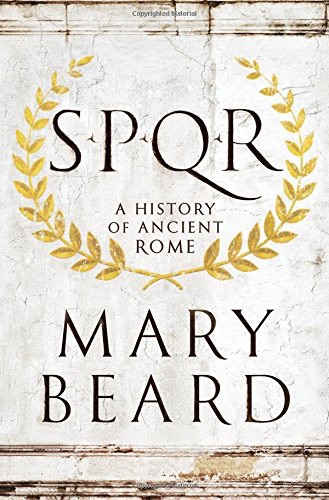SPQR: A History of Ancient Rome
Even the uprising of Boudicca in Britain in 60CE fits this pattern. Boudicca, or Buduica (we do not know exactly how to spell her name, but neither, presumably, did she) …
The hardcover edition weighs in at 536 pages plus end matter, yet reviewers consistently praise this history as concise. They have a point: the book often feels compressed. For example, we move directly from Augustus to Caligula, with scarcely a word for Tiberius. Earlier, Marius appears only as a minor pendant to Sulla’s revolution. Beard’s relaxed and accessible style gives the concise account a good deal of momentum, to be sure, but I’m not entirely sure I understand how a book this large can seem so small.
A quiet premise of this treatment is that the Romans anticipated modernity in a way not often noted. We all know that Roman towns had one-way streets and Roman bars had three shelves of liquor with the best stuff on the top shelf, but Beard makes the implicit argument that the End Of History has happened before, and that it essentially ended (or was paused) from Augustus through Septimius Severus. The first half of the book is History – a story of arms and men that ends in the Augustan settlement. After that, in Beard’s view our sources become gossipy because gossip was all there was. Beard doesn’t work to recover the political program or ideological goals behind Caligula’s quarrel with the military or Nero’s populism; she doesn’t really think there’s a story there at all. History was over, and only calamity would start it up again.
I think I first covered this period with Thomas Mitchell reading H. H. Scullard, and I’m tempted now to reread Scullard for comparison. Or perhaps to get Gibbon off the office shelf. Oh dear.
